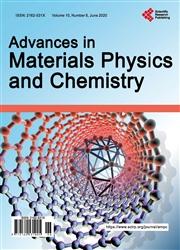Structure, Plastic Deformation of Polyethylene: A Molecular Dynamics Method
引用次数: 2
Abstract
This paper studies the influence factors of atoms number (N) at temperature (T) and after annealing time (t) on the structure shape and the plastic deformation of Polyethylene C2H4 (PE) by the Molecular Dynamics (MD) method with Dreading pair interaction, cyclic boundary conditions and plastic deformation of Polyethylene (PE) be done by stretching method according to the z-axis. The results of structure, plastic deformation of PE are analyzed through size (l), the total energy of the system (Etot), shape and associated energy (Ebond), angular binding energy (Eangle), energy Edihedral, interactive energy Vander Walls (Enon-bonding). When increasing N, t leads to the number of structural units of Face-Centred Cubic (FCC), Body-Centered Cubic (BCC) and Hexagonal Close-Packed (HCP) increasing, but Amorphous (Amor) decreases while the angle between the atoms is a constant corresponding to 109.5°. Besides, the length of the link (r) increases from r = 1.529 A to r = 1.558 A while the plastic deformation energy of PE gets an enormous change and the bonding angle at 109.27°. The length of the link r = 1.529 A and the size (l) of the PE material increase from l = 3.73 nm to l = 6.63 nm while the total energy of system (Etotal) decreases from Etotal = −1586 eV to Etotal = −7891 eV with the transition temperature is T = 103 K. Increasing the number of atoms leads to increasing the length of the link. The total energy Etotal of the system decreases, but the number of structural units in FCC, HCP, BCC and Amor increase, which leads to the length of the link increases, the Etotal decreases, and there is a change in the plastic deformation characteristics of PE. In contrast, increasing T leads to the plastic deformation increases, and PE moves from the amorphous state to the liquid state. The obtained results are very significant for future experimental research.聚乙烯的结构、塑性变形:分子动力学方法
本文采用分子动力学(MD)方法研究了温度(T)和退火时间(T)下原子数(N)对聚乙烯C2H4 (PE)结构形状和塑性变形的影响因素,并根据z轴方向采用拉伸法研究了循环边界条件和聚乙烯(PE)的塑性变形。通过尺寸(l)、体系总能(Etot)、形状及伴生能(Ebond)、角结合能(angle)、Edihedral能、范德壁相互作用能(ennon -bonding)对PE的结构、塑性变形结果进行了分析。当N增加时,面心立方(FCC)、体心立方(BCC)和六方密排(HCP)的结构单元数增加,而非晶态(Amor)的结构单元数减少,原子间夹角为109.5°常数。此外,连杆长度r从r = 1.529 A增加到r = 1.558 A, PE的塑性变形能发生了巨大变化,键合角为109.27°。在过渡温度为T = 103 K的条件下,PE材料的链长r = 1.529 A,尺寸l从l = 3.73 nm增加到l = 6.63 nm,体系总能量Etotal从Etotal =−1586 eV降低到Etotal =−7891 eV。原子数的增加导致链的长度的增加。体系总能量Etotal减小,但FCC、HCP、BCC和Amor中的结构单元数增加,导致环节长度增加,Etotal减小,PE的塑性变形特性发生变化。相反,增大T会导致塑性变形增大,PE从非晶态向液态移动。所得结果对今后的实验研究具有重要意义。
本文章由计算机程序翻译,如有差异,请以英文原文为准。
求助全文
约1分钟内获得全文
求助全文

 求助内容:
求助内容: 应助结果提醒方式:
应助结果提醒方式:


